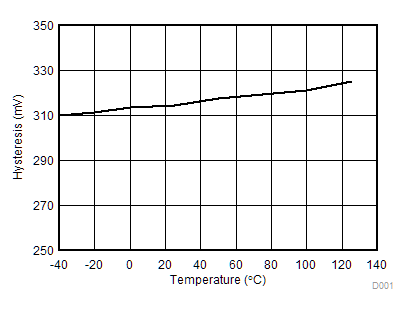ZHCSFM4B september 2016 – december 2021 UCC21521
PRODUCTION DATA
- 1 特性
- 2 应用
- 3 说明
- 4 Revision History
- 5 Pin Configuration and Functions
-
6 Specifications
- 6.1 Absolute Maximum Ratings
- 6.2 ESD Ratings
- 6.3 Recommended Operating Conditions
- 6.4 Thermal Information
- 6.5 Power Ratings
- 6.6 Insulation Specifications
- 6.7 Safety-Related Certifications
- 6.8 Safety-Limiting Values
- 6.9 Electrical Characteristics
- 6.10 Switching Characteristics
- 6.11 Insulation Characteristics Curves
- 6.12 Typical Characteristics
- 7 Parameter Measurement Information
- 8 Detailed Description
-
9 Application and Implementation
- 9.1 Application Information
- 9.2
Typical Application
- 9.2.1 Design Requirements
- 9.2.2
Detailed Design Procedure
- 9.2.2.1 Designing INA/INB Input Filter
- 9.2.2.2 Select External Bootstrap Diode and its Series Resistor
- 9.2.2.3 Gate Driver Output Resistor
- 9.2.2.4 Gate to Source Resistor Selection
- 9.2.2.5 Estimate Gate Driver Power Loss
- 9.2.2.6 Estimating Junction Temperature
- 9.2.2.7 Selecting VCCI, VDDA/B Capacitor
- 9.2.2.8 Dead Time Setting Guidelines
- 9.2.2.9 Application Circuits with Output Stage Negative Bias
- 9.2.3 Application Curves
- 10Power Supply Recommendations
- 11Layout
- 12Device and Documentation Support
- 13Mechanical, Packaging, and Orderable Information
6.12 Typical Characteristics
VDDA = VDDB = 12 V for 5 V and 8V UVLO, VDDA = VDDB = 15 V for 12V UVLO, VCCI = 3.3 V, TA = 25°C, No load unless otherwise noted.




A.
Figure 6-10 UCC21521ADW and UCC21521DW Rising and Falling Times vs. Load (VDD = 12 V)

A.
Figure 6-14 Pulse Width Distortion vs. Temperature
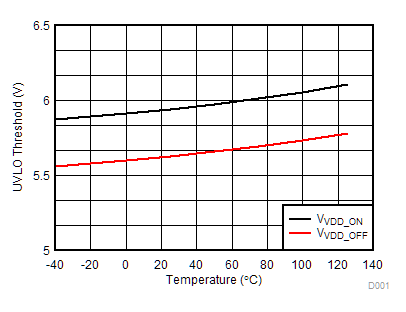

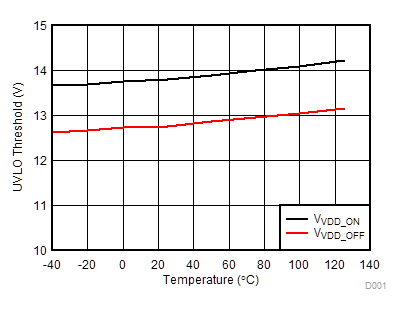

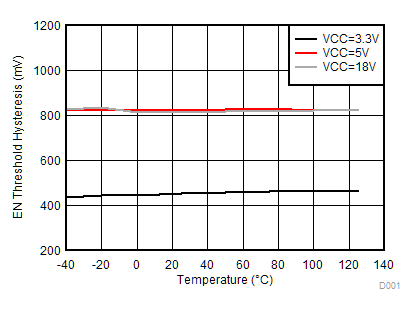
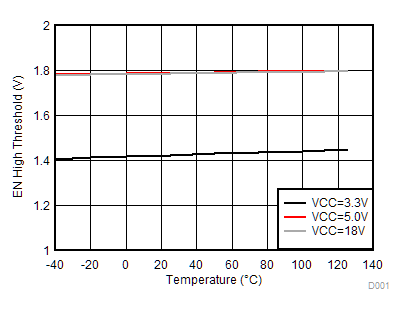




A.
Figure 6-9 IVCCI Quiescent Supply Current vs Temperature (No Load,
Input Low, No Switching)


